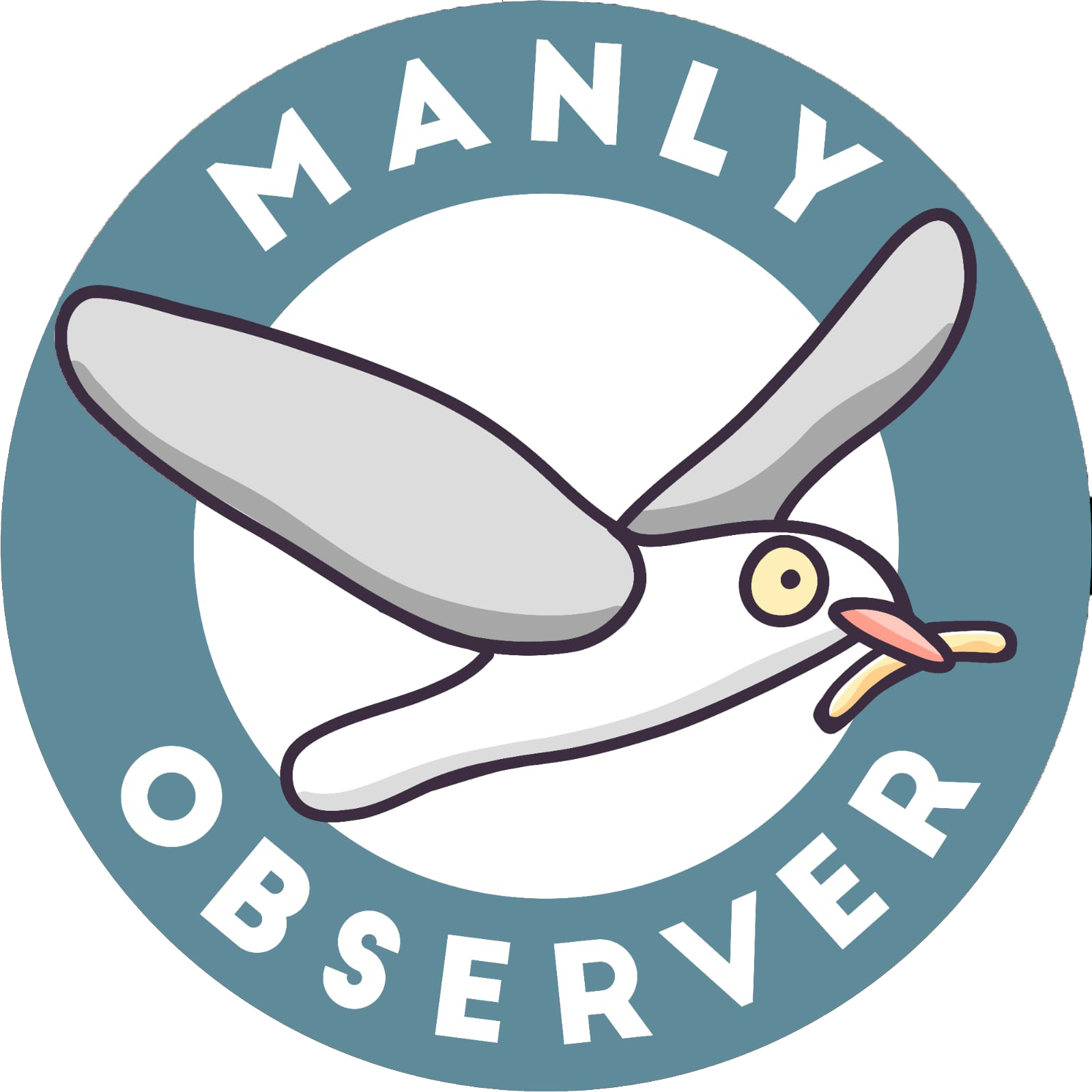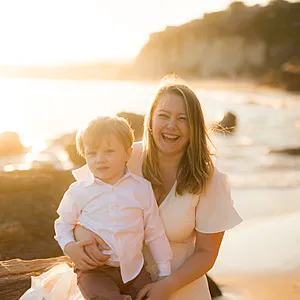Cycling advocates are claiming a partial victory after a long-running proposal for a bicycle path running north to south from Curl Curl Lagoon to Freshwater Village moves a step closer to realisation.
At their 30 April meeting, Councillors agreed that the proposed cycle path along Oliver Street, Bennett Street and Park Street (from Freshwater to Curl Curl) should be separated from pedestrians. This would make it an on-road lane, a change from the previously proposed shared bike-footpath to one side, away from vehicle traffic but at the cost of 43 trees.
However, they were reluctant to formally approve the plan until revisions are made to improve some safety issues identified in an audit, and to the huge loss of parking that will result. Currently 71 spots are slated to be removed to allow of the two-way separated bike path.
Mayor Sue Heins expressed her approval of revising the scheme, known as the Curl Curl – Freshwater Connectivity and Streetscape Upgrade, stating, “the original intention of the cycle path was to make the area safe for kids.”
A timeline of the progress and discussions surrounding the proposal are available to view on Council’s website here. Manly Observer’s previous report on the cycleway issue can be found here.

Trees and e-bikes
Edward Forrester, a Transport Planner and environmentalist (whom Manly Observer previously featured when he undertook a cycle challenge to raise funds for National Parks and Wildlife), told us he was pleased with Council’s latest decision to re-focus on a cycle lane separate to pedestrians.
“The original shared path plan was not good for a variety of reasons and they are considered substandard, particularly in areas of high pedestrian activity and with the changes in mobility that we’ve seen through the emergence of e-bikes.”
A major consideration for moving it onto the road has been the take-up of battery-powered ‘e-bikes’ over the last few years, proving very popular with youths on the Northern Beaches.

There are two primary schools along the proposed route, Harbord Primary and St John the Baptist, and e-bikes ridden through flocks of young children is a major safety concern.
Although a rider must legally be 16 or over to ride an e-bike, (aged 12-15 with adult supervision), and they must not exceed a maximum speed of 12km/hr on footpaths, or 25km/hr on dedicated cycle paths and the road, some e-bikes are capable of higher speeds with minor adjustments.
Ed continued, “Our understanding was that the shared path has been completely discounted, which is fantastic, and the 43 trees will not be chopped down.”
“Our understanding was that the shared path has been completely discounted, which is fantastic and the 43 trees will not be chopped down.”
The revised option of an on-road cycle path will likely see the felling of only one tree.
“Overall it was the right outcome,” Ed said, “but we obviously want them to finalise the design for the on-road separated bike path asap and avoid further delays. It was always going to need some further tweaks following the engagement. Disappointing after three years to still be at this point and that’s a question for council as to why this has been done so poorly.”
Curl Curl councillor Kristyn Glanville conceded the lack of progress was frustrating and told the Council meeting, “it’s not ideal the process we have gone through. It’s caused considerable resident anxiety over a three-year process.”
Deputy Mayor Cr Georgia Ryburn added, “If we keep deferring the decision the community will lose faith in the Council, and there’s a chance there will be new councillors in power after the September election.”

In an Instagram post on 2 May 2024, Cr Glanville summarised last week’s outcome: “For those following the bike path, a proposal went to community consultation for a separated bike path on Oliver St. The staff obtained a safety audit of the proposed design, and due to the issues identified in that audit, and the polarised views in the community, recommended that a shared path be adopted instead, as a “compromise” position.
“Unfortunately to have a shared path with sufficient width, this would necessitate clearing a number of street trees (potentially as many as 43, although perhaps this number would reduce on a detailed design). I received a lot of feedback that the staff recommendation to revert to a shared path was not acceptable, given the important role of street trees, and concerns about the potential for conflict between pedestrians and cyclists. I think this is very salient given the recent growth in popularity of e-bikes amongst local teens.
“While there are issues identified in the safety audit for the separated bike path, I think we should take the time to try and work through those issues and refine the design.”
So where does it go now?
Council will now be working on refining the design of the separated path to resolve the issues raised in the safety audit, and then come back to the Councillors with a further report on what is recommended, based on that consultation.
Ed extrapolated: “Council will now work with the TfNSW [Transport for NSW] Active Transport Team on the 2.2m on-road separated bike path option to address some of the safety concerns and explore opportunities to reduce the impact on parking… Options that they need to consider are angled parking and reducing the speed limit.”

However, not all councillors are enthusiastic about creating a cycle path through the area, citing a number of factors, including safety and the impact on local residents.
Cr Jose Menano-Pires raised several concerns including the effect on buses and larger delivery vehicles having to negotiate their way through a reduced road space.
The councillor told Manly Observer, “there’s no doubt at all that the best outcome for issues involving traffic / pedestrians / bicycles / motorcycles, etc, is always “separation”, no question about that.
“So, while separation is always the ideal option, and it’s easy to implement when designing green field development, it’s not so easy, or even possible to implement in areas that have been developed 80 or more years ago, which is the case. We just do not have the space, in most cases, without major costs involved in, say, acquisition of private land, etc. This is just not practicable.”
He elaborated, “In this case, following exhaustive evaluation of a number of solutions it boils down to two “costs”: either 71 (or so) car parking spots are lost for a separated bike lane, or 42 trees have to be replaced by another 84 for a shared path.
“Separation also implies a raft of other problems, safety exiting / entering driveways, cars blocking the bike lane, narrowing of the road, etc.”

Narrower roads for cycle lanes limits bus mobility
Cr Menano-Pires warned, “Another important point that has not been mentioned is that separation implies narrowing the road considerably, and buses may not be able to access this road. There have been cases where the bus drivers union [the Transport Workers Union, aka TWU] has prohibited his members to drive along certain narrowed roads, as it’s unsafe. It will also inconvenience motorists 24/7. In my view public transport is important.”
In August 2010, the State Transit Authority (STA, the NSW Govt bus service, which ceased operations on 2 April 2022) scrapped a significant proportion of the Route 311 service (Central Belmore Park to City Millers Point via Darlinghurst) after a new City of Sydney Council bikeway opened that narrowed the vehicle lane and made it difficult for buses to operate safely. Six bus stops were abandoned.
Other bus routes were also affected after the City of Sydney began their $70 million scheme to create 145 kilometres of dedicated cycle lanes in the inner east and inner west (first announced in 2008). Many of these were ‘pop-up’ cycle lanes introduced during the Covid-19 pandemic.
“The other side of the coin is that a shared path can be a safety risk for pedestrians,” Cr Menano-Pires added, “mainly with the proliferation of e-bikes. There’s no easy solution.”
Interested parties can view the various failed motions and amendments from councillors in the Council meeting minutes here. Ultimately, the resolved action was that council:
Work with Transport for NSW’s Active Travel Team and experts in Road Space Reallocation
with the view to refining the design option/s for a separated dedicated bike path in Oliver
Street, with the goal of trying to:
a. Address relevant safety issues identified in the safety audit.
b. Minimise the number of car spaces lost.
No timeline has been set.
Back reading: Curl Curl – Freshwater Connectivity and Streetscape Upgrade: https://yoursay.northernbeaches.nsw.gov.au/curl-curl-freshwater



